24 Best Smart Home Devices
There doesn’t seem to be a household appliance that hasn’t been made smart. Some gadgets can significantly improve your life, such as a video doorbell or smart lights, others tend to be a bit more of a gimmick (does anyone really need a Wi-Fi mug or a Bluetooth toothbrush?).
One thing you can’t deny is that the smart home is here to stay and it’s getting better every single year. In this guide, I’ll break down the best smart home devices that every home needs in 2022 and my recommended products to choose from.
I keep this guide regularly updated with my favourite products as they hit the market so be sure to bookmark it.
Best Smart Home Devices 2022
1. Smart Speaker
The first thing you need when you start a smart home is a smart speaker.
These act as more than just a speaker, they are a hub for your smart home with a built-in microphone that allows you to issue commands to control your smart home.
Some also have other connectivity such as Zigbee or Bluetooth built-in. This allows you to connect devices directly to them rather than using a separate hub.
Top Picks: Amazon Echo or Google Home
When it comes to smart speakers, your choice will depend upon which smart ecosystem you prefer:
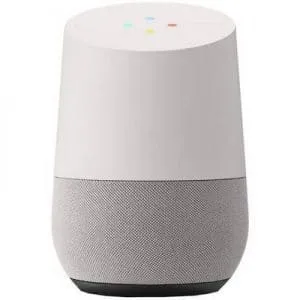
Those who prefer Google Assistant should opt for a Google Home. These are particularly good for playing media as you can cast music to them like any Chromecast.
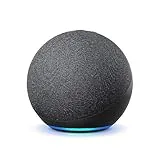
If you prefer Alexa, you’ll want to get an Amazon Echo. This has the largest range of compatible smart home devices and has more customisable routines.
2. Smart Display
An alternative to a smart speaker is a smart display. These are essentially a smart speaker with a screen attached.
As well as the standard functionality of a smart speaker as shared earlier, the screen gives added features. For example, you can see the full weather forecast when asked, you can pull up a live feed of your smart cameras and video doorbell, or you can stream a recipe video when you’re in the kitchen.
Top Picks: Amazon Echo Show or Google Nest Hub
Again, your choice will depend upon your ecosystem of preference:
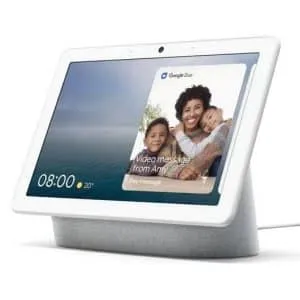
For Google Assistant, a Google Nest Hub is the best smart display. This can pull up YouTube videos with your voice and it supports casting so you can stream media from your phone.
You can also initiate video calls to anyone with Google Duo.
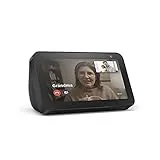
If you use Alexa, you’ll want to choose an Echo Show, this has a broad range of third-party skills that make use of the screen such as games.
You can also stream Amazon Prime Video and other streaming services with your voice.
3. Smart Lights
When I started my smart home, the very first smart devices were smart lights.
You can either opt for a dedicated smart lamp or use smart light bulbs in your existing light fittings. Most people will opt to use smart light bulbs as they are much cheaper. (Smart light switches are also an option, see the next point).
Once you have smart lights, you can turn them on/off with your voice, set up schedules such as a wake-up or coming home routine, or pair them with a smart sensor for motion-activated lights.
Top Pick: Philips Hue
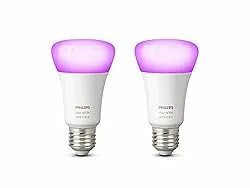
My No.1 choice when it comes to smart lights has to go to Philips Hue. These are the brightest and most reliable lights currently on the market. There’s a broad range of styles and fittings suitable for any room, and they have the best range of integrations thanks to Alexa, Google Home, HomeKit, IFTTT, and more.
However, these great lights come at a premium price and you’ll need a Hue Bridge to operate them. I think it’s worthwhile in the long term, however, if you want something a little more budget-friendly, check out Innr bulbs which will allow you to get twice as many for the same price.
4. Smart Light Switch
Instead of replacing the light bulb, you can opt to replace the light switch instead. I’ve not personally tried this but many smart home enthusiasts prefer this method as it means the switches still function as they should.
The downside to switches is that they are harder to install (might not be suitable for rented apartments) and you cannot change the colour as you can with most smart bulbs or lamps.
Some smart switches (such as the Philips Hue Dimmer Switch) are designed to be used in conjunction with smart bulbs so that you get the best of both worlds, however, you will also have to fork out more cash to get started.
Top Pick: Sonoff Smart Light Switch
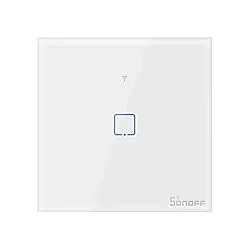
As of 2022, my current recommended smart switch is the Sonoff Wi-Fi switch. They are very basic but also very affordable so you could easily fit out your entire home.
There’s a single, double or triple gang switch available, plus they don’t require any hub as they connect directly to your router. Keep in mind that they do require a neutral wire (consult an electrician if you need help installing them).
5. Smart Blinds or Curtains
The next two smart devices for your home I would recommend are smart blinds or smart curtains, depending upon which you prefer.
Once installed, you can open your blinds or curtains with simple voice commands or set them up to open or close on a schedule. If you use Alexa routines, you can set them to open a certain number of hours after sunrise.
When it comes to curtains, you can get fully motorised curtain rail tracks or there’s a growing range of devices you can retrofit to existing curtains such as the Switchbot below.
Top Pick: Switchbot Curtain
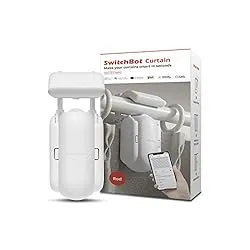
I’m a big fan of Switchbot’s range and their newer Switchbot curtain is true to their promise of making ‘dumb’ devices smarter. Simply attach the device to any curtain rail and make it smart.
Different attachments are available depending upon which type of rail you have so it will work with I-shape or U-shape rails as well as curtain rods.
It works with Alexa, Google Assistant, Siri, and IFTTT. Plus, I also love that you can buy a solar attachment to keep the batteries powered.
6. Smart TV Dongle
If you purchased your TV in the last 2-3 years, it will probably have smart features, but older devices might not. Luckily, you can make a TV smart with the use of a smart TV dongle.
This will add the ability to install apps, access streaming services, and add smart home integration.
For example, both Amazon’s Firestick and Google’s Chromecast can be connected to your smart home to bring up live feeds of your security cameras or alert you when the doorbell is rung.
Related Post: How to Tell If Your TV is Smart
Top Pick: Chromecast with Google TV
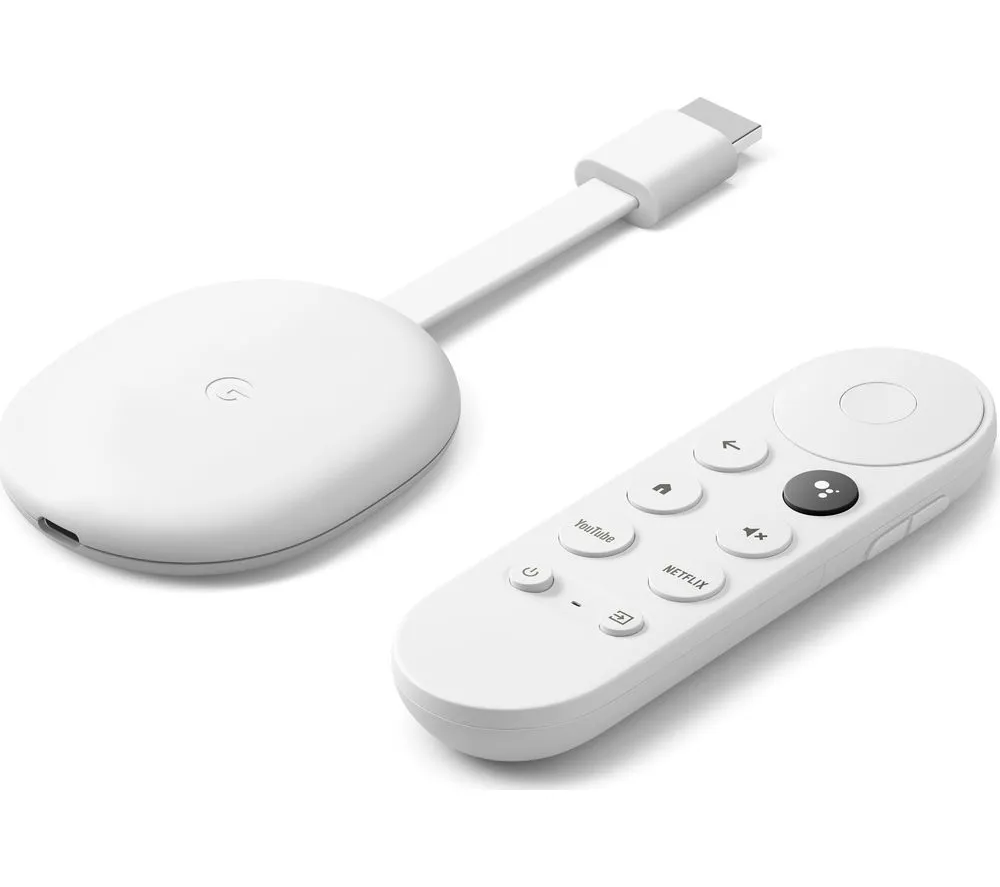
Just in case you hadn’t realised by now, I’m a big fan of Google’s smart home ecosystem, so you won’t be surprised to find out that the Chromecast is my favourite dongle.
Chromecast allows you to easily find content on your phone and stream it to your TV with all major streaming apps now supported. You can also connect a Chromecast to any Google Home or Nest smart speaker for voice control.
The latest Chromecast also has an intuitive user interface and remote control so you can browse for content directly on your TV.
7. Security Camera
The smart home revolution has upturned the home security market with more choices than ever before. No longer do you need to employ a professional firm to monitor your home, with smart cameras you can have direct control of your home security using your phone from anywhere in the world.
Most security cameras will offer live feeds of your home via the mobile app, automatic saving of clips when motion is detected, and integration with your other smart home devices such as lights or speakers.
Keep in mind that many brands will require a cloud storage plan to watch back saved clips from your phone, although there are now a few brands such as Eufy offering smart cameras without subscription.
Top Pick: Ring Spotlight Cam or Ring Indoor Cam
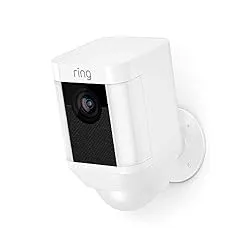
For monitoring the outside of your home, I recommend the Ring Spotlight Cam. This has two-way audio via the Ring app and a built-in LED light and siren that you can activate remotely to scare off any unwanted guests.
If you’re looking for an indoor security camera, again I would recommend Ring with their Indoor cam. This tiny camera is compact and discreet with similar features to the outdoor camera such as two-way talking, plus it’s very affordable too.
Both of these choices will be enhanced with Alexa commands, with the ability to bring up live feeds on your Echo Show or Fire TV using your voice.
8. Smart Plug
A smart plug is an adaptor that goes straight into the wall socket to add smart functionality to any power socket. This allows you to add existing devices to your smart home and control them with your voice.
Some example uses for smart plugs include turning on a floor fan with your voice, smartening up your existing lamps, or turning on an electric heater when the temperature drops.
My favourite thing to do with smart plugs is adding them to routines. For example, you can set an evening routine to turn off all the plugs in your house when you go to bed.
Note: If you plan to use your smart plug outside, you’ll need to get a dedicated outdoor plug with IP-rating.
Top Pick: TP-Link Kasa Smart Plug
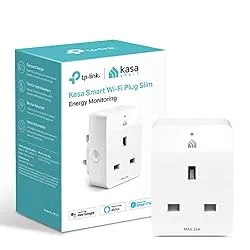
There’s very little difference between the majority of smart plugs on the market, they all look the same and most will integrate with both Alexa and Google Home, so this makes choosing the best one very difficult.
I’ve chosen the TP-Link Kasa smart plug as my favourite smart plug because of one additional feature that I think is useful, that is energy monitoring through the Kasa app. This allows you to keep an eye on how efficient you are being.
They’re also particularly slim at 30mm and very affordable.
9. Smart Air Purifier
Air purifiers are important devices for sanitising your indoor air to remove volatile organic compounds and vaporous chemicals that make their way into our homes and provide fresh, breathable air.
A smart air purifier goes one step further, monitoring your home to provide reporting air quality reports, and adding voice control.
You should also be able to add them to your smart home routines using Alexa, Google Home, or IFTTT. A popular IFTTT automation is to use the local pollen count to trigger a smart purifier.
Top Picks: Dyson’s Pure Cool or Levoit LV-PUR131S
There’s no doubt that Dyson’s Pure Cool Smart Purifier is the best on the market. Not only does it have a very futuristic design that looks great, but it functions as both a fan and a purifier to provide a stream of fresh cool air throughout your home. However, it’s very expensive and out of reach for most people.
Instead, I recommend the Levoit LV-PUR131S which has very similar features but at a much cheaper price. It has a true HEPA filter to remove allergens from the air and provides detailed reporting on your indoor air quality.
The Levoit is suitable for rooms up to 48m2, this should cover most rooms in a typical small or medium-sized UK home.
See my full guide on the best smart air purifiers to learn more about the differences between the two devices and additional recommendations.
10. Switchbot
I had to include the Switchbot as it’s the best way to retrofit your existing ‘dumb’ devices and make them smart. The concept is simple, attach this to any button, whether that’s a simple button or an on/off toggle, and you can control it from your smartphone or with your voice assistant.
The list of devices you can use this with is endless, some examples include coffee machines, lights, amplifiers, and plugs.
The Switchbot is available in black or white and can be attached to any surface with the included sticky pad.
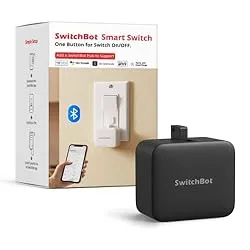
11. Smart Alarm System
Rather than a single smart camera, you can take your home security one step further with a smart home alarm system.
These kits will include motion and door sensors to detect activity and will have a keypad for disarming the alarm. The smart part about these is that they can link to an app on your phone so you know what’s going on whilst you’re not home.
Top Pick: Yale Starter Kit
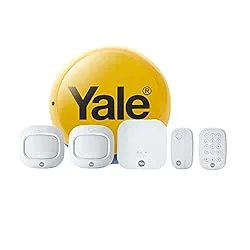
Yale have used their background in home security to create this smart security starter kit. It includes infrared sensors, door/window contacts, a keypad, a siren, and a smart hub.
I like the kit because it’s easy to expand to suit the size of your home. You can add up to 40 additional sensors to cover your whole home, these are plug-and-play with a range up to 200m so it’s very easy to set up yourself.
As for integrating with your other devices, my favourite feature is to link it with your Philips Hue lightbulbs to turn red when the alarm is triggered.
12. Smart Thermostat
The smart thermostat was one of the earliest smart devices to hit the UK market. This allows more advanced scheduling of your heating compared to traditional controllers
As well as turning up and don the temperature with your phone or voice, a smart thermostat can automatically adjust your heating based on your schedule and depending upon who is home. This is great for energy efficiency and can save you money in the long term.
Top Pick: Tado Smart Thermostat
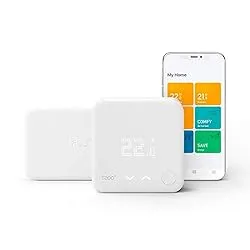
There’s no denying that the Nest Learning Thermostat is the most popular smart thermostat and one of the most user-friendly.
However, I think a better option is the Tado smart thermostat because it has the ability to add zoning which allows you to set different temperatures in different rooms using Smart TRVs.
This is in addition to all the usual features you’d expect like advanced schedules, integration with Alexa/Google Home/Siri, and geofencing.
13. Smart Locks
Trusting the internet with your locks might seem like a big step for some, but once used to it I find it to be a lot safer than traditional locks as you never forget to lock the door and there’s no risk of losing your keys or having them stolen.
With a smart lock, you’ll trade in keys for digital ways of opening the lock. This is usually Bluetooth which connects to an app on your phone, some will also use WiFi or NFC as additional ways of connecting. Most will also have a keypad as a backup which is useful when your phone runs out of battery.
Another benefit is that you can let people in remotely such as a cleaner or friends whilst your on holiday. They can also keep logs of visitors and more advanced devices even have fingerprint recognition.
Top Pick: Yale Connected Lock or Yale Conexis L1
Yale have a versatile range of smart locks depending upon which locking mechanism your door has.
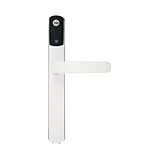
If you have a PVCu Multipoint Locking System (the type where you lift the handle before locking), then their Yale Conexis L1 is more suitable.
This allows you to unlock your door with key cards, key tags, phone tags, or via their secure Bluetooth app.
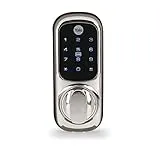
Whereas if you have a 60mm Backset Nightlatch, their Keyless Connected Door Lock is the best pick.
It has the same unlocking methods as above but with the addition of a keypad too.
14. Video Doorbell
One of the most popular smart home devices in the UK right now is the video doorbell. These give you a live feed of your doorbell straight to your phone from anywhere in the world. You’ll also get an alert whenever someone arrives on your doorstep and clips are recorded to be saved in the cloud.
With two-way audio, you can speak directly to your visitors even when you’re not in which adds extra security. The most advanced devices have features like facial recognition or the ability to keep an eye on parcels left on your doorstep.
Top Pick: Ring 3 Plus
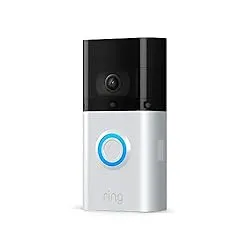
The best video doorbell in the UK right now is the Ring 3 Plus. Ring devices are extremely fast thanks to their Rapid Ring app, so you’ll receive the notification almost instantly, whereas some cheaper brands will leave your visitor hanging while it connects.
I recommend the Plus version as this includes pre-roll, this uses a recording loop to provide 4 seconds of footage prior to any activity being detected so you get a much fuller view of activity outside your home.
However, there’s an ongoing subscription cost, if you aren’t willing to pay this you will lose out on key features that make the doorbell worthwhile. See my guide to video doorbells without subscription for some alternative recommendations.
15. Smart Projector
Your home theatre can have a smart upgrade with a smart projector. This allows you to use streaming apps directly on the projector
Many will also integrate with smart assistants to allow you to control them with your voice or integrate them in routines.
When buying any projector, you need to keep in mind how many lumens it is, this is a measure of the brightness of the projector:
- For dark rooms: Below 1,500 lumens
- For rooms with some light: 1,500-3,000 lumens
- For rooms with ambient light: Above 3,000 lumens
Top Pick: Viewsonic M2
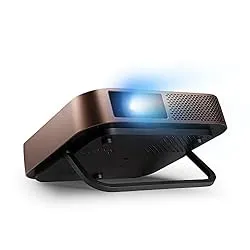
The Viewsonic M2 is a short-throw projector that can project a screen up to 100 inches. You can install all the popular streaming apps and it has both Alexa and Google Home voice control.
However, this projector is only 1200 lumens which means it’s suited to dark rooms only and isn’t bright enough for use in daylight.
16. Robot Vacuum Cleaner
The day that robots clean your home is finally here. With a robot vacuum cleaner, you can significantly reduce how often you have to get the upright vacuum out.
There is a lot of choice when it comes to robot vacuums. Some go in a random path around your home, whereas others have mapping technology (using Lidar or vSLAM) which allows you to schedule room-by-room cleaning.
Top Pick: Roborock S6
The Roborock S6 is my pick for the best robot vacuums in the UK. It has highly accurate laser-based navigation, but visual cameras also aid it in avoiding objects for a clean sweep of your home.
Better still, it has a built-in 180ml water tank so it can switch between mopping and vacuuming depending upon the floor type.
The S6 has excellent cleaning performance, suitable for both smaller and larger debris. It can even replace the existing vacuum providing you don’t have stairs.
17. Robot Lawn Mower
Now that the robots have taken care of your carpets, it’s time for them to tend to the lawns outside too thanks to a robot lawnmower.
Unlike a conventional mower, robot lawn mowers use a method called mulching where they cut the grass into tiny clippings which fall into the soil. This means there are no cuttings to collect and they also provide valuable nutrients for the soil.
Keep in mind that all robot mowers currently on sale in the UK require boundary cable to be laid around the perimeter of the lawn so the mower knows where the edges are.
Related Post: 16 Robot Lawn Mower Garage Ideas
Top Pick: Flymo Easilife
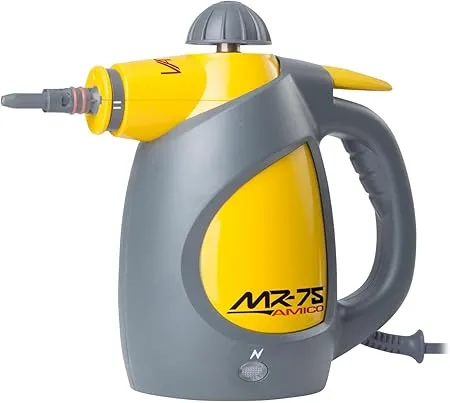
If you’re looking for a good balance between price and performance, Flymo’s Easilife robot mowers are a great choice.
You can set your own cutting schedule or allow the mower to create it’s own based on the weather and condition of the grass. They work particularly well on odd-shaped lawns thanks to their passage sense technology.
Bluetooth connectivity allows you to manage your mower from the companion app, although there is no smart home integration as of yet.
Tip: Make sure you select the correct size Easilife mower for your garden, there are 200m2, 350m2, and 500m2 options.
18. Smart Garage Door Opener
You’ll feel like a legend when you open your garage door just using your voice thanks to a smart garage door opener.
As well as opening on command, a smart garage door can be added to your routines. For example, opening your garage door and turning on the outside lights when you get home from work.
Top Pick: Meross Smart Garage Door Opener
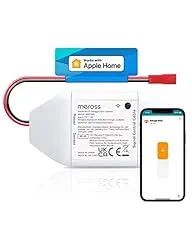
The Meross controller is an add-on device that can be retrofitted to most garage door systems from the likes of Hormann, Chamberlain, Skylink, Liftmaster, and Somfy.
This will allow you to integrate your garage door with your smart home ecosystem, it works with HomeKit, Alexa, Google Assistant, SmartThings, and IFTTT.
19. Smart Sprinkler or Irrigation System
If you’re a green-fingered tech enthusiast, this next smart device for the garden will be right up your street. With a smart sprinkler or smart irrigation system, you can automate the watering of your lawn or plants and save yourself the trouble.
I’m including both of these under the same section as they perform similar functions, only the sprinklers are better for the grass and the irrigation system is designed for plants. You could also use a smart irrigation system with potted plants.
They work by connecting to your tap which you then leave on. The smart device will allow water to flow based on timers or routines. Some of the better devices will have options to add multiple zones or sprinklers.
Top Pick: Netro Smart Controller
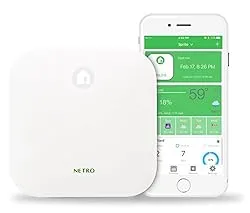
This smart controller can be used as both an irrigation or sprinkler controller. It connects to your tap and integrates with your smart home via Wi-Fi.
You can integrate it with Alexa to use voice commands to add to routines, but my favourite feature is that the controller can use local forecasts to determine its own schedule.
20. Smart Scales
There are smart home devices for every room, including the bathroom with these next two recommendations. Starting with smart scales, these are ideal for keeping an eye on your health and working towards your fitness goals.
Smart scales connect to a companion app where they store your historic weight and show how it’s changed over time. Some will also analyse other key vitals such as your body fat and muscle weight.
Top Pick: Withings Body+Top
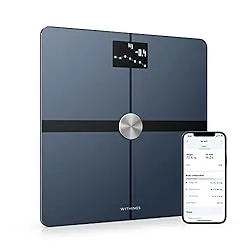
Withings was the first to create a true smart scale and their devices remain the best on the market.
Whilst most smart scales use Bluetooth, the Withings Body+ stands out as it connects directly to your Wi-Fi so you don’t need to reconnect your phone each time. There are up to 8 user profiles, simply select your profile, step on the scales and it will sync all the data to your account.
I recommend the Withings Body+ rather than the Withings Body as it also has body composition analysis, in addition to your weight, this will also track your body fat, water percent, muscle mass, and bone mass.
21. Smart Mirror
If you’re familiar with the sci-fi film The 6th Day, you might recall Arnold Schwarzenegger’s character checking his daily schedule in his mirror when it wishes him a happy birthday. When the film was made back in 2000, this seemed like a distant idea, but it’s now a reality with smart mirrors.
What does a smart mirror actually do? Well, this is where things get tricky as there isn’t yet a decent commercially available smart mirror to buy. So, you’ll have to take things into your own hands.
Most people building a smart mirror will use a Raspberry Pi and a PC monitor to create their setup. Luckily, there are plenty of YouTube tutorials like this one that take you through the process from start to finish.
22. Smart Kettle or Coffee Machine
The next smart device on my list is a smart kettle or coffee machine, depending upon your drink of preference.
Thanks to smart technology, you can add your machine or kettle to your routines which allows you to wake up to freshly brewed coffee or boil the kettle from the comfort of the sofa.
It’s not just convenience, smart technology can also add useful features such as maintenance alerts to your phone and customisable settings for the temperature of the kettle or strength of the coffee beans.
Top Pick: iKettle or Smarter Coffee Machine
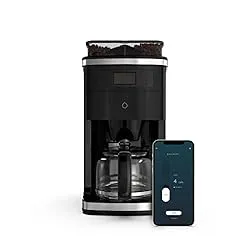
As a coffee drinker, I’m a particular fan of the Smarter Coffee Machine. This is a filter coffee machine and far cheaper than any of the other smart coffee machines in the UK which tend to be espresso machines.
It can be controlled via the app or using your voice. It also has a great geofencing feature that allows you to have a coffee waiting for you when you arrive home, something I didn’t see on any other devices I reviewed.
If you prefer tea, the iKettle (from the same company) has similar smart features. You can also change the temperature using your voice which is great if you use it for other drinks like green tea or boiling baby milk.
23. Motion Sensor
If you’re serious about taking your Alexa or Google Home routines (known as Automatons in HomeKit) to the next level, you’ll want to get yourself some motion sensors.
Once you have set up your motion sensor, you can create some excellent routines to light up rooms when motion is detected, to turn off appliances in rooms when no motion is detected, or to
These are particularly useful for the outdoors as you can turn your outdoor smart lights into security floodlights with motion detection.
Top Picks: Philips Hue Indoor Sensor or Outdoor Sensor
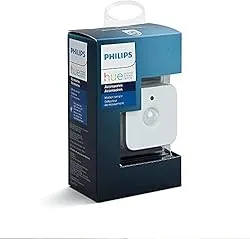
The most reliable and versatile motion sensors available right now are the Philips Hue sensors. They have both an indoor and outdoor motion sensor which integrate with other Hue products and Alexa.
The downside is that you’ll need a Hue Bridge to use them. If you don’t want to invest in this, there are Wi-Fi sensors such as the Knightsbridge sensor, however, this is far more limited as it doesn’t integrate with Alexa.
24. Door/Window Sensor
Another must-have smart gadget if you want to create some awesome routines is a door/window sensor. One half attaches to your door/window and the other half to your door/window frame so you can receive alerts when it’s open.
These can be used for home security, can be helpful as a reminder if you’ve left a window open at night, or can even be useful to ensure your toddler doesn’t go for a wander.
One of my favourite uses is to put one on the fridge door and have Alexa give me some motivational advice when I go in search of afternoon snacks.
Top Pick: Sonoff Wi-Fi Door/Window Sensor
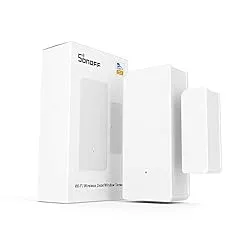
There are plenty of smart door/window sensors to choose from, but many of them are quite expensive which can soon mount up if fitting out your whole home.
One exception is the Sonoff sensor which is very cheap. You don’t need any hub as it connects directly to your Wi-Fi router and it easily integrates with Alexa for some epic routines.
Note: Sonoff say it integrates with Google Home, however, Google Home does not yet support routines that are activated by smart sensors so keep this in mind.